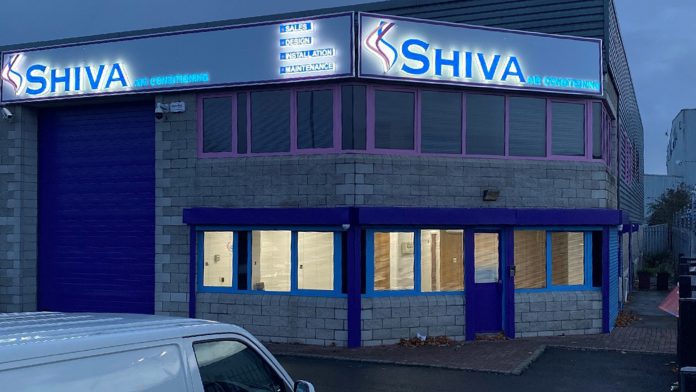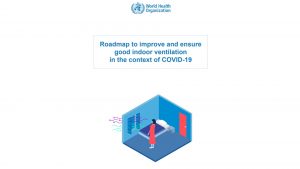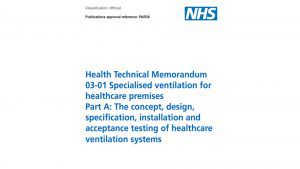
Commercial HVAC experts, Shiva Air, discuss this relatively new technology, why they feel it is here to stay, and what to look out for when choosing among the myriad of air cleaners available.
Based in Dublin, Ireland, Shiva was founded in 2009 by Stephen Harkin. The CEO has designed and installed fixed HVAC solutions across all sectors of healthcare ranging from primary care, GP and dental surgeries to long-term residential care settings, positive/negative isolation wards, and hospital operating theatres. In July 2020, just after the first COVID-19 lockdown, the company brought the first of their air cleaners range to the EU market which utilised elements of patented technology and features they had been designing since 2018.
Up until then, Stephen explains, a lot of media emphasis had wrongly been put on products that treat the incoming air, some of which were very expensive: ‘Think about it, why would you sterilise incoming air from the outside environment? Why is it called ‘fresh air supply’ in the first place if it requires additional treatment or sterilisation? It is a contradiction to open windows to let this same air in, yet air being mechanically forced through an F7 grade filter was not good enough.’
According to Stephen, the main culprit to be addressed at the time was ‘re-circulating air’ that had been breathed in and out by occupants sharing the same environment. This could be rectified by enhancing the ACH (air changes per hour) and ventilation rates in that area.
Stephen added: ‘It is embarrassing looking back now, that healthcare and even retail and office settings were officially advised to switch off the building AHUs (air handling units) and to instead open windows. Dilution and air changes are key, they always have been.
‘During the winter months opening windows for ventilation is no longer a viable option anyway, last year we had patients in healthcare settings and even our children in schools, sitting inside with jackets on, windows wide open, with cold air blowing in on them while the building’s heating system was on full blast- not the most energy efficient or ‘green’ solution. Hopefully, we do not have a repeat of this in 2022.’
Appropriate air ventilation is required in healthcare settings
At this time, the COVID-19 pandemic was just past its first peak and was not officially recognised as an airborne risk.
As we are now in the transition stage from pandemic to post-pandemic in the UK and Ireland, following the Omicron variant in early 2022, we will not solely be focusing on SARS-CoV-2, but also on the most reported HCAIs1 caused by airborne transmission which can lead to staff and patient viral infections such as:
- Norovirus also known as gastroenteritis, the winter vomiting bug;
- Rhinovirus also known as the common cold;
- Influenza also known as the flu virus, H1N1; and
- Tuberculosis also known as TB, Mycobacterium tuberculosis.
The World Health Organization’s guidance document released on 1 March 2021 (Roadmap to improve and ensure good indoor ventilation in the context of COVID-19) is now over a year old, with no significant updates since 13 April 2021.

The release of this document at the time highlighted the need to place greater emphasis on inhaling airborne droplets over touching contaminated surfaces. It was one of the first official documents with hard data and case studies showing SARS-CoV-2 infections caused directly through droplets or indirectly through airborne dissemination (aerosols), which could potentially be higher than physical contact between individuals or contaminated surfaces.
Despite this knowledge and risk regarding airborne transmissions, IPC preventative measures in healthcare settings remain largely focused on fomite cleaning and hand washing.
In the UK, Health Technical Memorandum 03-01 Part A is a 213-page document published on 22 June 2021 that explains the appropriate air ventilation needed for healthcare facilities.

In the long term, to comply with the memorandum guidance and to keep staff and patients safe, healthcare systems will need to aim to upgrade air ventilation and air quality systems that comply with the specifications outlined in HTM 03-01.
The memorandum has two parts: Part A – Design and Validation, and Part B – Maintenance. It begins with the design and installation of air ventilation systems and moves on to the operational management of ventilation systems.
The recommendations in HTM 03-01 lay out the minimum requirements for ventilation systems. The systems should also have safe access so experts can inspect and maintain them.
Every healthcare facility has an air ventilation system of some sort. The next question is: How do we improve or supplement existing systems to bring ventilation and IAQ up closer to the newer HTM 03-01 standards?
The challenges associated with improving IAQ and ventilation
Improving your IAQ and air ventilation to meet the latest revised standards can be challenging due to the following reasons.
Viability – building type and age
Some healthcare settings are based in buildings built before 1960. These types of buildings typically do not have the layout for natural cross ventilation, nor the same level of services space in ceiling voids, or the luxury of large open service risers and rooftop/basement plant rooms present in buildings built more recently. Some healthcare settings may be in a listed or protected structure, meaning more restrictions regarding planning permission to upgrade or install new HVAC services.
Filtration upgrades
There is a common misconception that HEPA filters can be retrofitted into existing AHU and ventilation plants, or FCUs in a building to improve filtration and IAQ levels. Unfortunately, most of the time this is not the case. HEPA filters by design restrict airflow rates, meaning the originally designed system will not be able to meet the same standards as before due to the pressure drop caused by installing HEPA filters in the system. Typically, an entirely new HVAC system would need to be designed to suit the revised demands of the building.
Costs
Turn-key upgrade of an existing AHU/HRU system to increase capacity and efficiency can easily end up in the region of £100,000 plus for a space measuring just 200m², it is not a simple procedure. Typically, a CAPEX budget must be procured before obtaining private quotations or placing the entirety of works out for public tender.
Disturbances and downtime
Most existing internal air ventilation plants are located above ceiling level in a healthcare setting, meaning areas must be temporarily closed off to accommodate building work to remove the ceiling, allowing HVAC contractors access to installing/upgrading the ventilation plant, and then more builder attendance to reinstate the ceiling.
Availability and lead-in times
Due to the increased spotlight on air ventilation systems, particularly in healthcare settings, there has been a significant demand increase for the manufacturing of AHU/HRUs. Shiva Air, for example, has been notified of an average lead-in time of 18-24 weeks for the manufacture of any custom-built AHU system for projects from their suppliers.
Stephen stated: ‘If it is a brand-new building being constructed, or significant renovations and mechanical upgrades are being undertaken or planned in the near future, we would of course advise investing in a fixed solution.
‘However, some older existing premises cannot structurally avail of a new system to be installed, others may have a short lease remaining, meaning they will not have plans or budget approval for a full mechanical renovation within the next five years, and this is where we feel a quantity of quality built, and certified portable air cleaners with a scheduled service plan will be the economic solution to amplify the existing ventilation services they currently have in the building.’
Do air cleaners work?
In short, portable air cleaners do work. There has been a lot of supportive evidence after installing portable Air Purifiers or air cleaners to supplement the ventilation capability in spaces. Studies and hard data have been published by established bodies such as:
- Scientific Advisory Group for Emergencies (SAGE) (Nov. 2020);
- Centers for Disease Control and Infection (CDC);
- United States Environmental Protection Agency (USEPA); and
- The Chartered Institution of Building Services Engineers (CIBSE).
However, with supportive evidence, and media-covered releases, also comes a rush of new air cleaners to the market.
In a healthcare setting particularly, due diligence is very important when selecting a product. Choose the product(s) which are right for the setting in the long term and not the products which benefit the budget at the time.
There are only a handful of legitimate products on the EU market, ranging from £1,000 right up to £20,000 plus.
Anything below this price category is most likely not a commercially tested device or viable product for use in a healthcare setting.
For example, a product originally designed for domestic purposes which can serve a standard 20m² living room, will not provide the same results in a healthcare setting with staff and patients occupying the same space 24/7.
Beware of common ‘ambush marketing’ techniques and wording such as:
- Filter-related terms like ‘HEPA type’, ‘HEPA standard’, ‘microbial HEPA’, ‘micro-electrostatic HEPA’, ‘HEAP13/14’, ‘dual HEPA’ and so on, are not actual HEPA filters tested to EN 1822:2019 / ISO 29463 Standards. If in doubt, request the test report;
- ‘Medical grade’ or ‘hospital grade’ should indicate the machine is registered as a medical device with the EMA or the national authority the product is being sold in. If not, query why the product is being advertised as one;
- ‘Deactivates XX% of viruses in XX minutes’, follow the asterisk. Many products are tested in chambers as small as 0.4m³ providing an advertised deactivation rate within seconds or minutes. However, in real-world settings this rate would take much longer, or may not be attainable at all, particularly in occupied environments; and
- UVC for air cleaning: UVC lamps on their own typically take between four and seven seconds for 2-log deactivation on most common airborne bacteria and viruses. Air cannot not enter a device, stop for this period, and then exit the device. This means multiple (100s) air passes are required. Single pass filtration requires at least one additional catalyst, even for 2-log 99% deactivation.
Practicality must also be considered when selecting a product. It is normally advisable (with a few exceptions), to use multiple lower-rated devices for a large open space of 150m²+, as opposed to one single larger device with a rating for this area. This is to increase the chances of capturing particulates in the HEPAs, as opposed to relying on the stale air travel from multiple sides of space, into a single device.
Costs of serviceable parts should also be considered, and availability. Whilst a product may seem a lower cost initial outlay, the longer-term costs when replacement items (such as filters, cores, and UVC lamps) are included, may overall be higher. And most importantly, ensure these parts will actually be available from the supplier in 12/24/36/48 months’ time if the product is discontinued by them.
Stephen finishes with the statement: ‘Always keep in mind- there is no 100% ‘silver bullet’ solution with portable air cleaners. A form of fresh air, being passive or by infiltration allowance, will still be required.’
This article is from issue 23 of Health Europa Quarterly. Click here to get your free subscription today.









